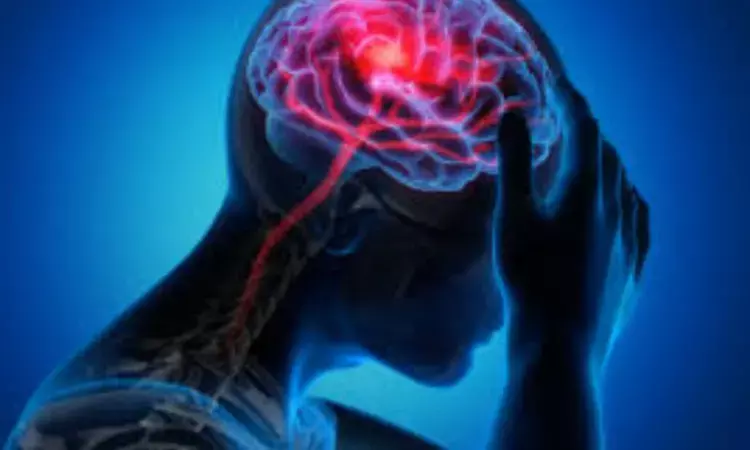- Home
- Medical news & Guidelines
- Anesthesiology
- Cardiology and CTVS
- Critical Care
- Dentistry
- Dermatology
- Diabetes and Endocrinology
- ENT
- Gastroenterology
- Medicine
- Nephrology
- Neurology
- Obstretics-Gynaecology
- Oncology
- Ophthalmology
- Orthopaedics
- Pediatrics-Neonatology
- Psychiatry
- Pulmonology
- Radiology
- Surgery
- Urology
- Laboratory Medicine
- Diet
- Nursing
- Paramedical
- Physiotherapy
- Health news
- Fact Check
- Bone Health Fact Check
- Brain Health Fact Check
- Cancer Related Fact Check
- Child Care Fact Check
- Dental and oral health fact check
- Diabetes and metabolic health fact check
- Diet and Nutrition Fact Check
- Eye and ENT Care Fact Check
- Fitness fact check
- Gut health fact check
- Heart health fact check
- Kidney health fact check
- Medical education fact check
- Men's health fact check
- Respiratory fact check
- Skin and hair care fact check
- Vaccine and Immunization fact check
- Women's health fact check
- AYUSH
- State News
- Andaman and Nicobar Islands
- Andhra Pradesh
- Arunachal Pradesh
- Assam
- Bihar
- Chandigarh
- Chattisgarh
- Dadra and Nagar Haveli
- Daman and Diu
- Delhi
- Goa
- Gujarat
- Haryana
- Himachal Pradesh
- Jammu & Kashmir
- Jharkhand
- Karnataka
- Kerala
- Ladakh
- Lakshadweep
- Madhya Pradesh
- Maharashtra
- Manipur
- Meghalaya
- Mizoram
- Nagaland
- Odisha
- Puducherry
- Punjab
- Rajasthan
- Sikkim
- Tamil Nadu
- Telangana
- Tripura
- Uttar Pradesh
- Uttrakhand
- West Bengal
- Medical Education
- Industry
Stroke Patients with Artery Dissection Face Greater Risks with IV Thrombolysis: Study Finds

Japan: A recent study has highlighted the potential risks and outcomes associated with intravenous thrombolysis (IVT) in patients with acute ischemic stroke (AIS) who have underlying intracranial artery dissection (IAD). The nationwide study found that patients with AIS and IAD face a threefold higher risk of intracranial hemorrhage following intravenous thrombolysis.
"While IAD did not increase in-hospital mortality, we observed a significant reduction in the chances of achieving functional independence at discharge. These findings highlight the importance of thorough risk assessment before administering IVT to patients with IAD, ensuring a more informed and cautious approach to treatment," the researchers wrote in the International Journal of Stroke.
IVT is a widely used AIS treatment aiming to restore blood flow and minimize neurological damage. However, its safety in patients with underlying intracranial artery dissection remains uncertain due to the structural fragility of the dissected artery. This raises concerns about potential complications, including intramural hematoma exacerbation and arterial rupture, making it crucial to carefully evaluate the risks before administering IVT in such cases.
Given these potential risks, Yuichi Imanaka, Department of Health Security System, Center for Health Security, Graduate School of Medicine, Kyoto University, Kyoto, Japan, and colleagues aimed to determine whether IAD is associated with an increased likelihood of intracranial hemorrhage (ICH) following IVT and to assess its impact on functional outcomes.
For this purpose, the researchers conducted a retrospective matched-pair cohort study using a nationwide inpatient database in Japan, including AIS patients treated with IVT from 2010 to 2024. They excluded cases with carotid or vertebral artery dissections, missing mRS data, or prior intra-arterial thrombolysis. Patients with IAD were matched 1:4 with non-IAD controls based on key clinical factors. Outcomes, including ICH, functional independence at discharge (mRS 0–2), and in-hospital mortality, were analyzed using multivariable logistic regression, adjusting for demographic, clinical, and hospital-related variables.
The key findings of the study were as follows:
- Among 83,139 AIS patients treated with IVT, 242 (0.3%) had underlying IAD (median age: 54 years; 34% women). These patients were matched with 968 non-IAD controls.
- IAD was linked to a higher risk of ICH (OR = 3.18).
- Patients with IAD had a lower likelihood of functional independence at discharge (OR = 0.51).
- IAD was not associated with increased in-hospital mortality (OR = 1.09).
"The findings suggest that patients with underlying intracranial artery dissection have a higher risk of intracranial hemorrhage and a lower likelihood of functional recovery after intravenous thrombolysis compared to those without IAD," the researchers concluded.
Reference:
Egashira, S., Kunisawa, S., Koga, M., Ihara, M., Tsuruta, W., Uesaka, Y., Fushimi, K., Toda, T., & Imanaka, Y. (2025). Safety and outcomes of intravenous thrombolysis in acute ischemic stroke with intracranial artery dissection. International Journal of Stroke. https://doi.org/10.1177/17474930251317326
Dr Kamal Kant Kohli-MBBS, DTCD- a chest specialist with more than 30 years of practice and a flair for writing clinical articles, Dr Kamal Kant Kohli joined Medical Dialogues as a Chief Editor of Medical News. Besides writing articles, as an editor, he proofreads and verifies all the medical content published on Medical Dialogues including those coming from journals, studies,medical conferences,guidelines etc. Email: drkohli@medicaldialogues.in. Contact no. 011-43720751


